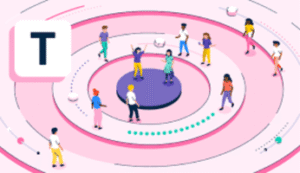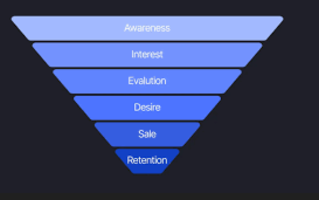You’ve probably heard the phrase ‘if you’re selling to everyone, you’re selling to no one.’ But what does that really mean for your business? Whether you’re launching a new product, creating content, or running ad campaigns, understanding your target audience isn’t just marketing jargon. It’s the foundation of every successful business strategy.
Think about it. When you walk into a bookstore, you don’t browse every single section, right? You head straight to the genres you love. That’s exactly how your customers think. They’re not looking for generic solutions. They’re searching for something that speaks directly to them, their problems, and their desires. This is where knowing your target audience becomes your secret weapon.
A target audience is a particular set of people most likely to want your product or service. These are the individuals who share common characteristics like age, location, interests, or behaviors that make them perfect candidates for what you’re offering. Understanding who these people are transforms your marketing from a shot in the dark into a precision-guided strategy that actually works.
From real-world examples to practical strategies in this guide, you’ll learn about identifying and connecting with your target audience and to start focusing on those who are already looking for exactly what you provide.
Understanding the Concept of Target Audience
A target audience represents the heart of your marketing efforts. It’s not just about demographics or throwing around statistics. It’s about understanding real people with real needs, frustrations, and dreams. When you truly know your target audience, you can craft messages that resonate, create products that solve actual problems, and build a brand that feels like it was made just for them.
Many businesses make the mistake of thinking broader is better. They believe casting a wide net will catch more fish. But here’s the reality: speaking to everyone means connecting with no one. Your message gets diluted, your budget gets stretched thin, and your competitors who’ve nailed down their target audience will run circles around you.
The beauty of defining your target audience lies in efficiency. Instead of spending money on ads that reach people who’ll never care about your product, you invest in channels and messages that speak directly to those who are already interested. This means better conversion rates, lower customer acquisition costs, and a community of loyal customers who feel understood.
Who is Your Target Audience Example?
Let’s make this concrete with some real-world scenarios that bring the concept of target audience to life.
Fitness App for Busy Professionals
Imagine a fitness app designed specifically for working professionals aged twenty-five to forty who struggle to find time for the gym. The target audience here isn’t just ‘people who want to get fit.’ It’s professionals who work long hours, value efficiency, and prefer working out at home or during lunch breaks. They’re likely earning a decent income, live in urban areas, and consume content about productivity and work-life balance. They’re searching for fifteen-minute workouts, not two-hour gym sessions.
Organic Baby Food Brand
Consider a company selling organic baby food. Their target audience consists of health-conscious parents, primarily mothers aged twenty-eight to thirty-eight, who prioritize natural ingredients and are willing to pay premium prices for quality. These parents actively research nutrition, follow parenting blogs, and are concerned about additives and preservatives. They shop at Whole Foods or similar stores and belong to online parenting communities where they share advice and product recommendations.
Gaming Laptop Manufacturer
A company manufacturing high-performance gaming laptops targets a completely different audience. Their ideal customers are serious gamers and content creators aged eighteen to thirty-five who value performance over price. They follow gaming influencers on YouTube and Twitch, participate in online gaming communities, and are willing to invest significant money in equipment that enhances their experience. They care about specs like graphics cards, refresh rates, and cooling systems.
Sustainable Fashion Brand
A sustainable fashion brand might target environmentally conscious millennials and Gen Z consumers, primarily women aged twenty-two to thirty-five, who view fashion as self-expression but refuse to compromise their values. They’re active on Instagram and Pinterest, follow sustainability influencers, and research brands before purchasing. They prioritize quality over quantity and are willing to pay more for ethically made clothing that lasts.
These examples illustrate how specific a target audience can and should be. Notice how each goes beyond simple demographics to include behaviors, values, and pain points. This depth is what transforms marketing from generic to genuinely effective.

What are the Four Types of Target Audiences?
Understanding the different ways to categorize your target audience helps you approach your marketing from multiple angles. Here are the four main types that marketers use to segment their audiences.
Demographic Targeting
This is the most common and straightforward approach to defining your target audience. Demographics include measurable statistics about people such as age, gender, income level, education, occupation, and family status. A luxury car brand might target high-income earners aged forty to sixty, while a budget-friendly meal kit service might focus on young families earning middle-class incomes.
Demographics provide the skeleton of your target audience profile, but they shouldn’t be your only consideration. Two people with identical demographics can have completely different interests, values, and purchasing behaviors.
Geographic Targeting
Location matters more than many businesses realize. Geographic targeting focuses on where your audience lives, from broad regions down to specific neighborhoods. A snow removal service only makes sense for people in cold climates. A surfboard shop needs to be near coastal areas. But geography goes deeper than obvious examples.
Urban dwellers have different needs and lifestyles than rural residents. Someone in New York City relies on public transportation and values convenience differently than someone in suburban Texas who drives everywhere. Climate, local culture, population density, and even time zones affect how you communicate with your target audience.
Psychographic Targeting
This is where things get interesting. Psychographics dive into the psychology of your target audience by examining their attitudes, interests, values, lifestyles, and personalities. Are they risk-takers or security-seekers? Do they value experiences over possessions? Are they early adopters or late majority?
A travel company might target adventure-seekers who value experiences and spontaneity, while a retirement planning service targets security-minded individuals who plan carefully for the future. Two people with identical demographics can have completely different psychographic profiles, making this type of targeting incredibly powerful for crafting compelling messages.
Behavioral Targeting
Behavioral targeting looks at how people act, specifically their purchasing behaviors, brand interactions, and product usage patterns. This includes what they buy, how often they buy, what triggers their purchases, which devices they use, and how they interact with your brand and competitors.
Someone who regularly buys premium organic products demonstrates different behavior than someone who only shops sales. A person who researches extensively before purchasing needs different messaging than an impulse buyer. Behavioral data reveals not just who your audience is, but how they make decisions and what motivates them to act.
Most successful marketing strategies combine all four types of targeting to create a comprehensive picture of their ideal customer. The more dimensions you understand about your target audience, the more precisely you can reach and engage them.
Who is Mostly the Target Audience?
The composition of your target audience depends entirely on your specific business, but certain patterns emerge across industries. Understanding who typically forms the core of various target audiences helps you think strategically about your own.
Age Demographics That Drive Markets
Millennials and Gen Z currently dominate many consumer markets because of their spending power and digital nativity. They’re comfortable shopping online, influenced by social media, and value authenticity and social responsibility. However, Baby Boomers control enormous wealth and are increasingly tech-savvy, making them prime targets for healthcare, travel, and financial services.
The key isn’t chasing the largest demographic but identifying which age groups actually need and can afford what you’re selling. A retirement community obviously targets older adults, while a student loan refinancing service focuses on younger professionals.
Gender Considerations in Marketing
While gender-based marketing has evolved significantly, certain products and services naturally skew toward specific genders. Cosmetics and skincare traditionally target women, though men’s grooming is rapidly growing. Power tools and automotive services have historically focused on men, though these assumptions are increasingly outdated.
Smart marketers recognize that gender preferences vary by product category and avoid assumptions. They let behavior and interests guide their targeting rather than relying solely on gender stereotypes.
Income and Education Levels
Your target audience’s income and education significantly influence their purchasing decisions and priorities. Luxury brands target high-income individuals who value status and quality. Budget brands serve price-conscious consumers who prioritize value. Educational products and services often target college-educated professionals who value continued learning.
Understanding your audience’s economic reality ensures your pricing aligns with their budget and your messaging speaks to their values. You can’t sell premium-priced products to budget-conscious shoppers without addressing the value proposition that justifies the cost.
Life Stage Targeting
People’s needs change dramatically throughout their lives. New parents need completely different products than empty nesters. College students have different priorities than established professionals. Recent retirees enter a new phase of life with unique challenges and opportunities.
Life stage targeting recognizes that a thirty-year-old might be in vastly different circumstances depending on whether they’re single and career-focused, newly married, or raising young children. Each situation creates distinct needs, challenges, and purchasing priorities.
The most important takeaway is that your target audience should be defined by relevance, not size. A smaller, highly targeted audience that genuinely needs your solution will always outperform a massive, vaguely defined group with minimal interest.

How to Write for a Target Audience
Creating content that resonates with your target audience requires more than good writing skills. It demands empathy, research, and strategic thinking. Here’s how to craft messages that connect.
Know Their Language and Communication Style
Every target audience has its own vocabulary, tone preferences, and communication style. Tech-savvy professionals appreciate industry jargon and detailed specifications. Busy parents want straightforward, practical advice without fluff. Teenagers respond to casual, authentic language that feels like a conversation with friends.
Listen to how your target audience actually speaks. Visit their online communities, read their comments on social media, and pay attention to the questions they ask. Then mirror that language in your content. This doesn’t mean dumbing down your message or being inauthentic. It means meeting people where they are and speaking in a way that feels natural to them.
Address Their Specific Pain Points
Generic content talks about features. Powerful content addresses specific problems your target audience faces. Don’t just say your productivity app has a task management feature. Explain how it helps overwhelmed project managers keep track of multiple deadlines when they’re juggling five projects simultaneously and their inbox is exploding.
Research what keeps your audience awake at night. What frustrates them? What obstacles stand between them and their goals? What have they tried that didn’t work? When your content acknowledges these specific struggles, readers feel understood. They think, “This person gets me,” which builds trust and engagement.
Provide Solutions and Actionable Value
Your target audience doesn’t want to be sold to constantly. They want valuable information that helps them achieve their goals or solve their problems. Every piece of content should offer genuine utility, whether that’s teaching a new skill, providing fresh insights, or offering practical tips they can implement immediately.
Educational content positions you as a trusted resource rather than just another company trying to make a sale. When you consistently provide value, your audience returns, shares your content, and thinks of you first when they’re ready to make a purchase.
Match Content Format to Audience Preferences
Different audiences consume content differently. Busy executives might prefer concise blog posts with clear takeaways they can scan quickly. Visual learners engage more with infographics and videos. Detail-oriented professionals appreciate comprehensive guides with data and case studies.
Pay attention to which content formats generate the most engagement from your target audience. Do they comment more on videos or written posts? Do they share infographics or long-form articles? Let their behavior guide your content strategy rather than assuming what they want.
Optimize for Search Intent
Understanding your target audience means knowing what they’re searching for and why. Are they looking for quick answers, detailed guides, product comparisons, or entertainment? Search intent reveals the mindset and needs of your audience at different stages of their journey.
Create content that aligns with these different intents. Someone searching ‘what is digital marketing’ needs educational content. Someone searching ‘best email marketing software for small business’ is comparing options and needs detailed reviews. Someone searching ‘Mailchimp pricing’ is close to making a decision. Tailor your content to match where your target audience is in their journey.
Finding Your Target Audience Through Research
You can’t rely on assumptions when defining your target audience. Systematic research reveals who your customers really are versus who you think they are.
Analyze Your Current Customer Base
Your existing customers provide valuable insights into your target audience. Look for patterns in who’s already buying from you. What characteristics do your best customers share? What problems were they trying to solve? Where did they find you?
Customer surveys, interviews, and feedback reveal motivations, pain points, and decision-making factors you might not have considered. Don’t just collect this data—actually analyze it for patterns that inform your understanding of your ideal target audience.
Study Your Competitors’ Audiences
Your competitors target similar audiences, and their marketing provides clues about what works. Analyze their social media followers, blog readers, and customer reviews. What messaging resonates? What complaints come up repeatedly? Where are there gaps in how they serve their audience?
This research isn’t about copying competitors but understanding the broader market landscape and identifying opportunities they’re missing. Maybe they’re targeting one demographic while ignoring another segment that would benefit from your solution.
Use Analytics and Data Tools
Digital platforms offer incredible insights into your target audience. Google Analytics reveals who visits your website, what content they engage with, and how they found you. Social media analytics show demographic breakdowns of your followers and which posts drive the most engagement.
These tools transform guesswork into data-driven decisions. You might discover your assumed target audience doesn’t match who’s actually engaging with your content, prompting a strategic pivot that improves results.
Create Detailed Buyer Personas
Based on actual data and research, buyer personas are fictionalized portrayal of your ideal customers. They go beyond demographics to include goals, challenges, values, and behaviors. A complete persona might include what a typical day looks like, what media they consume, what objections they have to purchasing, and what would convince them to choose your solution.
Creating three to five detailed personas for different segments of your target audience helps everyone on your team understand who you’re serving and how to communicate effectively with them.
Common Mistakes When Defining Target Audiences
Even experienced marketers make these errors that undermine their targeting effectiveness.
Defining Too Broad an Audience
Saying your target audience is ‘everyone’ or ‘small businesses’ lacks the specificity needed for effective marketing. Small businesses vary enormously. A solo consultant has completely different needs than a fifty-person manufacturing company. The more specific your target audience definition, the more effectively you can reach and serve them.
Focusing Only on Demographics
Demographics tell you who someone is but not why they buy. Two people with identical demographics can have completely different values, interests, and purchasing behaviors. Combine demographic data with psychographic and behavioral insights for a complete picture of your target audience.
Ignoring Audience Evolution
Your target audience isn’t static. As markets change, new generations come of age, and social trends shift, your audience evolves. Things that were effective five years ago might not be relevant today. Regularly revisit your target audience definition and adjust based on current data and market conditions.
Making Assumptions Instead of Researching
Many businesses define their target audience based on assumptions rather than actual research. They think they know who their customers are without validating those beliefs. This leads to marketing that misses the mark and wastes resources. Always ground your target audience definition in real data and customer feedback.
Building Your Target Audience Strategy
Understanding your target audience is just the beginning. You need a strategic approach to consistently reach and engage them.
Choose the Right Marketing Channels
Your target audience doesn’t exist everywhere online—they congregate in specific places. Teenagers dominate TikTok while professionals network on LinkedIn. Homeowners browse Pinterest for inspiration while gamers stream on Twitch. Don’t spread yourself across every platform. Focus on the channels where your target audience actually spends time.
Research which platforms your audience uses, when they’re most active, and what type of content they engage with on each platform. A B2B software company will find their target audience on LinkedIn and industry forums, not Instagram. A fashion brand targeting Gen Z will thrive on TikTok and Instagram but struggle on Facebook.
Develop Targeted Content Strategies
Create content calendars and themes that speak directly to your target audience’s interests and needs. Map content to their customer journey, providing educational content for awareness, comparative content for consideration, and detailed information for decision-making.
Different segments of your target audience need different content. New customers need onboarding and basic education. Existing customers want advanced tips and new features. Brand advocates might enjoy behind-the-scenes content and opportunities to contribute their own stories.
Test and Refine Your Messaging
Never assume your first attempt at messaging will perfectly resonate with your target audience. Run A/B tests on headlines, ad copy, email subject lines, and call-to-action buttons. Small changes in how you phrase your message can dramatically impact results.
Pay attention to which messages generate the most engagement, conversions, and positive feedback. Let your target audience tell you what resonates through their actions, then double down on what works while eliminating what doesn’t.
Measuring Success with Your Target Audience
You can’t improve what you don’t measure. Track these metrics to evaluate how well you’re reaching and engaging your target audience.
Engagement Metrics
Monitor how your target audience interacts with your content. High engagement rates—likes, comments, shares, time on page—indicate your content resonates. Low engagement suggests a disconnect between your message and your audience’s interests.
Look beyond vanity metrics like follower counts to meaningful interactions that demonstrate genuine interest and connection. A smaller, highly engaged target audience is infinitely more valuable than a large, disinterested following.
Conversion Rates
Ultimately, your target audience should take desired actions, whether that’s making purchases, signing up for newsletters, downloading resources, or requesting demos. Track conversion rates across different channels and campaigns to identify what drives action.
If traffic is high but conversions are low, your targeting might be attracting the wrong audience or your messaging isn’t compelling enough to motivate action. Use this data to refine both your target audience definition and your marketing approach.
Customer Feedback and Satisfaction
Regular feedback from your target audience reveals whether you’re meeting their needs and expectations. Surveys, reviews, support tickets, and social media comments provide qualitative insights that numbers alone can’t capture.
Happy customers who feel understood and well-served become advocates who bring more of your ideal target audience to your business through word-of-mouth recommendations. Their feedback also guides product development and service improvements.
FAQs
What is the difference between target audience and target market?
A target market is the broader group of potential customers for your product or service, defined primarily by demographics and basic characteristics. Your target audience is a more specific subset within that market that you’re actively trying to reach with particular marketing campaigns or messages.
For example, your target market might be women aged twenty-five to fifty, while your target audience for a specific campaign might be working mothers aged thirty to forty who value convenience. The target market is strategic and broad, while the target audience is tactical and specific.
How do I know if I’ve chosen the right target audience?
You’ll know you’ve identified the right target audience when your marketing efforts generate consistent engagement and conversions. Key indicators include lower customer acquisition costs, higher conversion rates, increased customer lifetime value, strong engagement on your content, and customers who enthusiastically recommend you to others.
If you’re struggling to generate interest despite quality marketing, your target audience definition likely needs refinement. Test your assumptions with small campaigns, gather feedback, and adjust based on what the data reveals about who actually responds to your offering.
Can a business have multiple target audiences?
Absolutely. Most businesses serve multiple customer segments with different needs, characteristics, and behaviors. A fitness company might target serious athletes, casual exercisers, and people beginning their fitness journey—all distinct audiences requiring different messaging and approaches.
The key is creating separate strategies for each target audience rather than trying to speak to everyone with one generic message. However, be careful not to spread your resources too thin. It’s better to serve two target audiences exceptionally well than to poorly serve five.
What is a niche target audience?
A niche target audience is a highly specific, narrowly defined segment within a broader market. Instead of targeting all pet owners, a niche target audience might be owners of senior dogs with mobility issues who prefer natural remedies.
Niche targeting allows businesses to become specialists rather than generalists, often commanding premium prices because they deeply understand and serve specific needs that broader competitors overlook. While niche audiences are smaller, they’re often more loyal and easier to reach through specialized channels.
How often should I update my target audience definition?
Review your target audience definition at least annually or whenever you notice significant changes in your business performance or market conditions. Major shifts like launching new products, entering new markets, or observing changing customer behaviors should trigger immediate reviews. However, avoid changing your target audience constantly based on short-term fluctuations.
Look for sustained trends over months, not days or weeks. Your target audience definition should be stable enough to build consistent marketing strategies around while remaining flexible enough to adapt to meaningful market evolution.
Conclusion
Understanding your target audience isn’t a one-time exercise you complete and forget. It’s an ongoing process of learning, testing, and refining your understanding of the people you serve. When you truly know your target audience—their needs, desires, challenges, and behaviors—everything about your business becomes more focused and effective.
The businesses that succeed aren’t necessarily those with the best products or the biggest budgets. They’re the ones that deeply understand their target audience and craft every aspect of their marketing to speak directly to those specific people. Start by thoroughly researching who your target audience really is, not who you assume they are. Build your entire marketing strategy around serving this audience exceptionally well.
Speak their language, address their specific problems, and provide genuine value in every interaction. The time you invest in understanding your target audience is the most valuable work you’ll do in your business. It informs not just your marketing but your product development, customer service, and overall business strategy. Get this foundation right, and everything else becomes easier. Your messages will resonate, your conversions will improve, and you’ll build a loyal community of customers who feel like your business was created just for them. Because, in a very real sense, it was.



